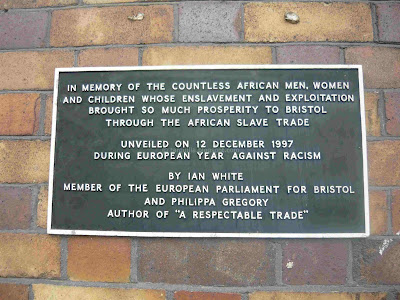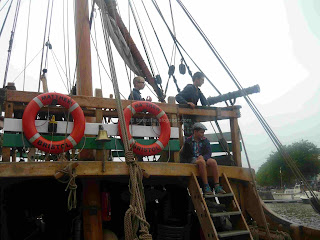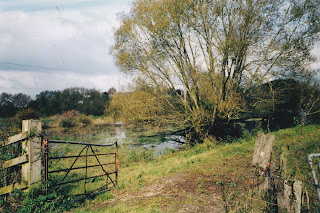Ship shape and Bristol fashion
"...the tidal range of the river Avon being so high that at low tide boats lie on the mud in the harbour. All must be stowed neatly to avoid damage to ship or cargo..."
Over the summer we spent a couple of days visiting
Starting off on the Clifton Downs, we headed first to one of Bristol's most recognisable landmarks, Brunel's suspension bridge. Hanging over the river Avon across the gorge it is an iconic structure. It took 33 years to complete and Brunel himself died before it was finished.
 |
| The Clifton Suspension bridge |
We strolled across it looking down at the water below and explored the new visitors centre. Having enjoyed the views we headed back across the bridge.
A zigzag path leads down steeply to the Cumberland basin below. Traffic rushes past, and over, the river and the lock gates which were once filled with ships.
These are the waters which were plied by the Bristol
 |
| River Avon |
After managing to cross the very busy road we were at the water side by the lock. Crossing up and down the footbridges we were one minute high above the water and roads and at the next back down amongst the exhaust fumes.
Brunel designed many bridges through his life. In
 |
| Looking along the swivel bridge with the suspension bridge behind |
Carrying on along the water side we walked round the outer basin where ships jostled for space in Bristol's hey day. There has been a harbour in the city for over a thousand years.
It is a harbor with a long ship building tradition. Of the many famous ships built and launched in
 |
| The SS Great Britain |
We carried on around the harbour, crossing St Augustines Reach over Pero's bridge. This horned lifting bridge was named in honour of a man who was born, lived and died a slave.
 |
| Looking towards the town centre |
It is only right to recognize Bristols part in the so-called triangular trade. Bristol became very rich from the trade of the harbour. Merchants prospered through this dark part of the cities history and there are many large houses in the wealthy areas of Clifton
 |
| A plaque by the harbour acknowledging Bristol's past |
 |
| The industrial heritage of the docks |

Alongside the quay lies a replica of The Matthew which we took the chance to stop and look at. We even got to scramble down the ladder into the living quarters. The explorer Giovanni Caboto is better known to Bristolians as John Cabot. He sailed from
 |
| The deckhands exploring a replica of the Matthew |
As we carried on around the water we were firmly in familiar territory. There is a marina here with a large number of house boats and close to this is the spot where Tarquilla was put back together and launched after being brought by lorry in two halves from the garden she was built in.
There are several yards still working including the Underfall yard.
I am told that it has a Bristol Patent slipway which was built in 1890 and is one
of only a few of that age still working in the country.
It is also where the fire boat Pyronaut was hauled out to start her journey to London to take part in the queens jubilee pageant on the Thames.
 |
| Many adventures have started here |
As well as smaller dockyards there is still the Great Western Dockyard where the SS Great Britain lies in dry dock. Another of Brunel's projects, this is where the worlds first great ocean liner was built. It is also here that Aardman animations have their headquarters. A small detour meant that we saw a Shaun the Sheep outside and all the tiny figures displayed in the windows from Morph to Wallace and Grommit.
 |
| Gateway to the Great Western Dockyard |
By now with weary legs it was time to head back up-hill to the car parked high up on the Downs. This also involved a long and complicated conversation about Downs being up. It is a lovely area and you can almost imagine the coaches trotting around the roads and past generations promenading in the sun.
 |
| An avenue on Clifton Downs |
It was a nice trip to the city and a lovely couple of days. Maybe one day we will take that trip up the Bristol Channel, up the Avon, through the lock gates and back to the harbour with Tarquilla.






Comments
Post a Comment